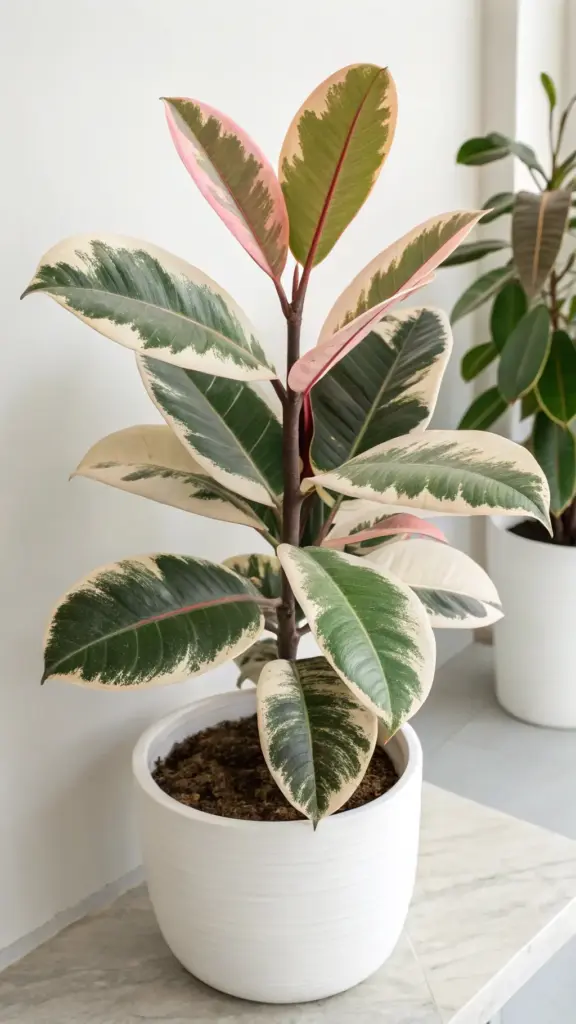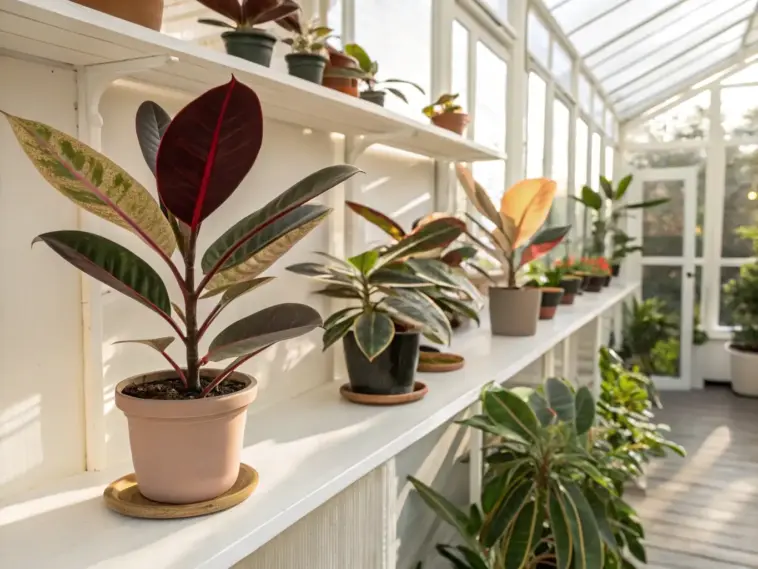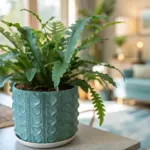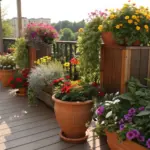Did you know that while most plant parents stick to the classic Ficus elastica, there are actually over 800 species in the rubber plant family?
As someone who’s been curating indoor gardens for years, I can tell you that the most breathtaking varieties are often the ones hiding in plain sight at specialty nurseries.
These aren’t your typical big-box store finds – we’re talking about the crown jewels that serious collectors guard like family secrets!
Whether you’re looking to elevate your living room’s aesthetic or add that perfect statement piece to your home office, these seven rare beauties will transform your space from ordinary to absolutely extraordinary.
1. Ficus elastica ‘Shivereana’ – The Painted Masterpiece

I’ll never forget the first time I spotted a Ficus elastica ‘Shivereana’ at a tiny plant shop in Brooklyn. The owner had it tucked away in the back corner, almost like she was hiding it from casual browsers.
This wasn’t just another rubber plant – it looked like someone had taken a paintbrush and created abstract art on every single leaf. The cream, green, and pink marbling was so stunning that I literally gasped out loud.
The Discovery Story That Changed Everything
The ‘Shivereana’ variety has quite the origin story, and honestly, it’s pretty fascinating. This particular cultivar was actually discovered as a sport mutation in Thailand around 2019.
What makes this discovery so special is that it happened completely by accident. A grower noticed one branch on a regular rubber plant that had these incredible variegated patterns.
They propagated that single branch, and boom – the ‘Shivereana’ was born. Sometimes the best plant discoveries happen when we’re not even looking for them!
Those Incredible Marbling Patterns
Let me tell you about the leaf patterns because they’re absolutely mind-blowing. Each leaf is like a unique piece of artwork with cream, sage green, and soft pink tones.
The variegation isn’t uniform at all – some leaves have more cream, others are dominated by that gorgeous pink blush. No two leaves are exactly alike, which is what makes this plant so addictive to collect.
I’ve noticed that the pink coloration tends to be more pronounced on newer growth, especially when the plant gets bright indirect light. The older leaves often settle into more muted cream and green tones.
Care Requirements That Actually Work
Here’s where I made my biggest mistake early on – I treated it exactly like a regular rubber plant. Big error on my part!
Variegated plants need more light than their solid green cousins because they have less chlorophyll. I learned this the hard way when my first ‘Shivereana’ started losing its beautiful patterns.
The sweet spot for lighting conditions is bright, indirect light for about 6-8 hours daily. Too much direct sun will scorch those delicate variegated sections, but too little light makes the plant revert to mostly green.
Watering schedule should be when the top 2 inches of soil feel dry. I use my finger to test – it’s the most reliable method I’ve found.
Where to Find This Beauty (And What You’ll Pay)
Good luck finding one at your local Home Depot! These plants are still pretty rare in mainstream stores.
Your best bet is specialty plant nurseries or online plant retailers like Steve’s Leaves or Gabriella Plants. I’ve also had success with plant swaps and Facebook plant groups.
Pricing ranges can be pretty shocking if you’re not prepared. Small 4-inch pots typically run$80-150, while larger specimens can easily hit$300-500.
The price reflects the rarity – remember, every single ‘Shivereana’ comes from that original Thai mutation. Supply is still catching up with demand.
Styling This Statement Plant
This rubber plant variety is definitely a showstopper in modern home decor. I’ve found it works best as a focal point rather than blending into a plant collection.
The variegated foliage pairs beautifully with neutral color schemes – think whites, creams, and soft grays. The pink tones add just enough warmth without being overwhelming.
I keep mine in a simple white ceramic planter because anything too busy competes with those gorgeous leaf patterns. Less is definitely more with this plant.
Placement tips: I’ve had the best success near east-facing windows or about 3-4 feet from south-facing windows with sheer curtains.
Ready to discover another rare beauty that’ll make your plant-loving friends seriously jealous? Click the next button below to learn about the stunning Ficus elastica ‘Ruby’ – a variety that literally glows with deep burgundy and pink hues that change with the seasons!










GIPHY App Key not set. Please check settings